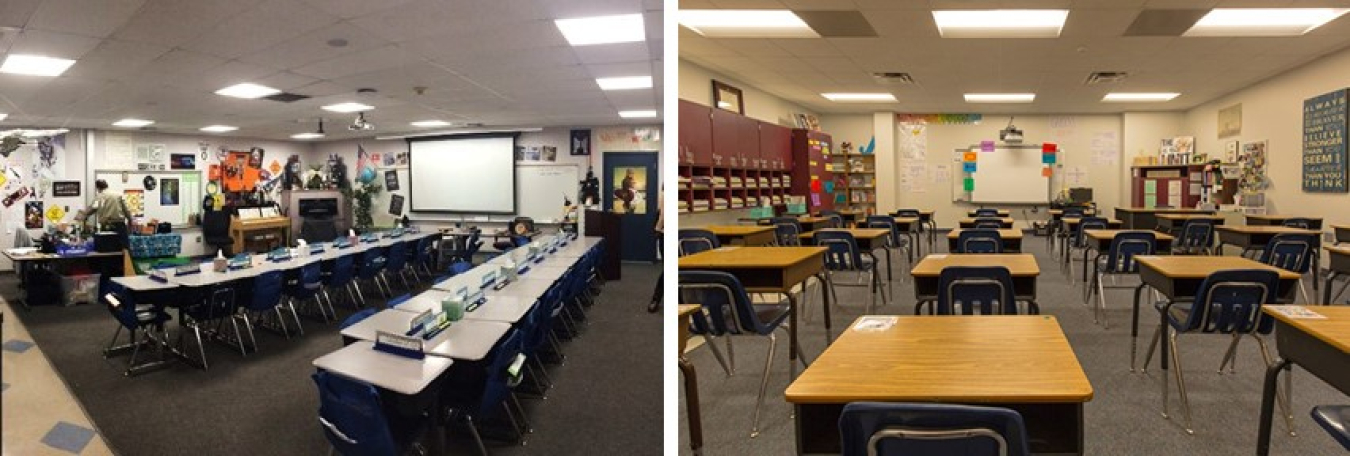
SPECIFICATIONS AND GUIDANCE
DOE is leveraging industry partnerships, field studies, and surveys in schools to develop specifications and guidance to address barriers and drive adoption of quality lighting in schools. LED systems can reduce energy consumption, reduce maintenance and operation costs, and improve the visual appearance and lighting quality of classrooms and school environments. When additional controls are considered, more energy can be saved and some controls, like dimming, can offer additional useful features. For example, tunable LED lighting is often implemented in special education classrooms as an additional tool for teachers.
Upgrading Linear Fluorescent Fixtures to LED in Schools (Guide, November 2024)
Lighting Specification Guidance for Schools (Guide, November 2024)
Why Tunable? A Look at Schools Using Tunable Lighting (Fact sheet, November 2024)
The Lagging Transition to LEDs in Schools – Part 2 of 3 (Article, December 2024)
A Lesson In LED Adoption: Understanding the hurdles faced by K–12 schools (Article, April 2024)
Type B TLEDs: Chosen by many, prohibited by some (Article, October 2024)
The Lagging Transition to LEDs in Schools – Part 1 of 3 (Article, October 2024)
FIELD STUDIES
Emory University Cognitive Empowerment Program
Emory University and Georgia Institute of Technology partnered to create the Charlie and Harriet Schaffer Cognitive Empowerment Program facility, which aims to help individuals experiencing mild cognitive impairment maintain their physical and cognitive health, in part through lighting changes that may support retention or relearning of skills. PNNL collaborated with the team, contributing to the lighting design and specification, and observing the progress of the project as the lighting and controls went through final installation and commissioning. This case study documents the issues encountered in the effort to get the lighting and controls systems to operate as intended. It concludes with guidance for design professionals and manufacturers to help avoid problematic complexity in future projects.
A Case Study of Tunable White LED Lighting with Networked Lighting Controls (April 2023)
Folsom Cordova Unified School District
PNNL partnered with the school district and Sacramento Municipal Utility District to document a trial installation of tunable-white LED lighting systems in three classrooms at an elementary school in Folsom, California. The study focuses on illuminance, estimated energy use, spectral power distribution, and related human response metrics.
Folsom Cordova Classroom Tunable Lighting (GATEWAY report, September 2018)
Lessons in the Classroom (Article, May 2019)
Carrollton-Farmers Branch Independent School District
PNNL partnered with the school district in Carrollton, Texas, to document a trial installation of tunable-white LED lighting systems in three classrooms.
Carrollton-Farmers Classroom Tunable Lighting (GATEWAY report, September 2017)
Carrollton-Farmers Classroom Tunable Lighting (GATEWAY brief, September 2017)
Two That Are Tunable (Article, December 2017)
SIMULATIONS
Energy Impacts of Circadian Metrics
PNNL evaluated how well available software tools model light spectrum and intensity within the built environment. These tools are also being used to understand how designing for circadian metrics affects lighting energy consumption in multiple space types.
Energy Impact of Human Health and Wellness Lighting Recommendations for Office and Classroom Applications (Journal article, August 2020)

